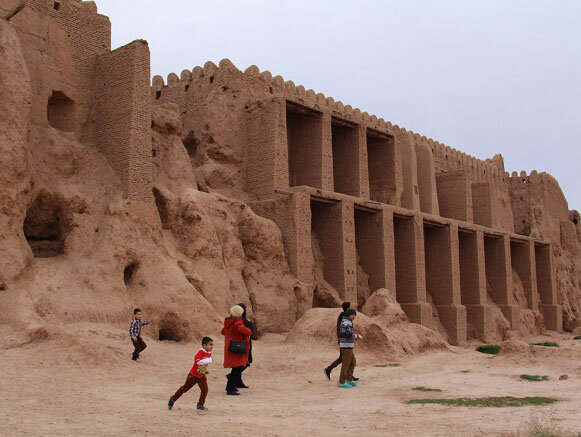Shahr-e Belqeys prosperous in late Sassanid, early Islamic eras: expert

TEHRAN – Shahr-e Belqeys (“City of Belqeys”), situated in northeastern Iran, was prosperous during a span of time from the late Sassanid era to early Islamic times, a cultural heritage expert has said.
“Though [previous] archaeological excavations at nearby mounts and hilltops put the antiquity of Belqeys at some 6,000 years, it enjoyed prosperity from the late Sassanid to the early Islamic eras,” ILNA quoted Hossein Rahmani, director of the Belqeys national heritage, as saying on Tuesday.
Historical evidence, including a book on the history of Neyshabour, suggests that Shahr-e Belqeys won special attention by Sassanid monarchs of the time, which brought the land a special fortune before the advent of Islam (in the region), he explained.
“It can be said that Shahr-e Belqeys was hectic from the late Sassanid era to a time when Nader Shah Afshar (one of the most powerful rulers in Iranian history) assumed power (in early 18th century).”
“Belqeys citadel is one of the largest mudbrick fortresses in Iran after the UNESCO-registered Bam citadel,” the official said.
The ruined citadel, which is sometimes referred to as Shahr-e Belqeys is located in northeastern North Khorasan province. It lies at a short distance from the city of Esfarayen. Remnants of the citadel, family lodgings, irrigation channels, a cistern, and a hypostyle hall are amongst objects so far been unearthed in Belqeys during rounds of excavation.
The Sassanid era (224 CE–651) is of very high importance in the history of Iran. Under Sassanids, Persian art and architecture experienced a general renaissance. Architecture often took grandiose proportions such as palaces at Ctesiphon, Firuzabad, and Sarvestan that are amongst highlights of the ensemble.
Crafts such as metalwork and gem-engraving grew highly sophisticated, yet scholarship was encouraged by the state. In those years, works from both the East and West were translated into Pahlavi, the language of the Sassanians.
Islamic arts, the literary, performing, architecture, and visual arts of the vast populations overwhelmed Iran, West Asia and elsewhere that adopted the Islamic faith from the 7th century onward.
These adherents of the faith have created such an immense variety of literatures, performing arts, visual arts, and music that it virtually defies any comprehensive definition. In the narrowest sense, the arts of the Islamic peoples might be said to include only those arising directly from the practice of Islam.
AFM/MG
Leave a Comment